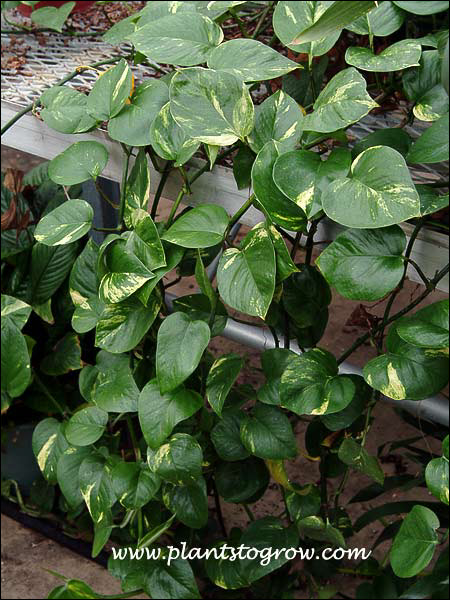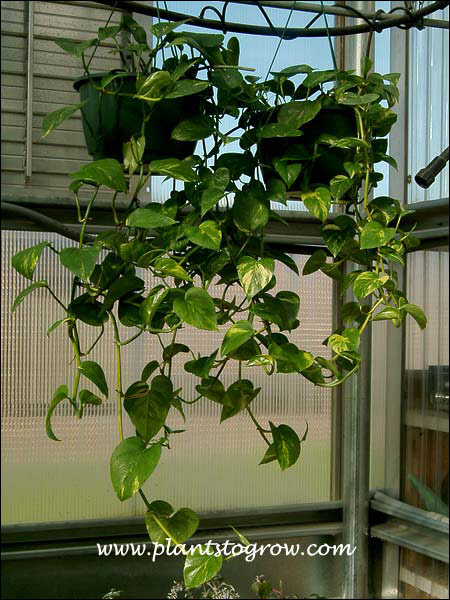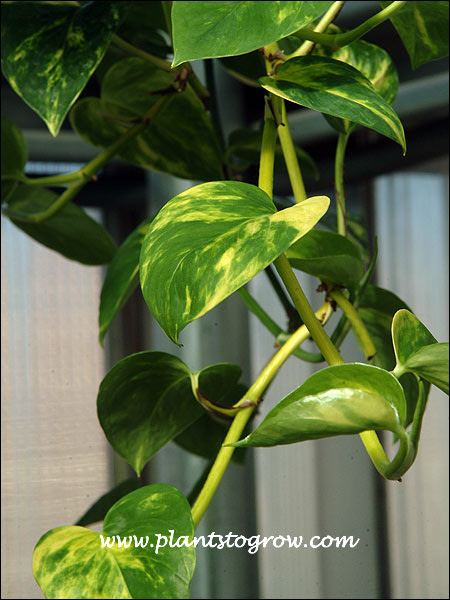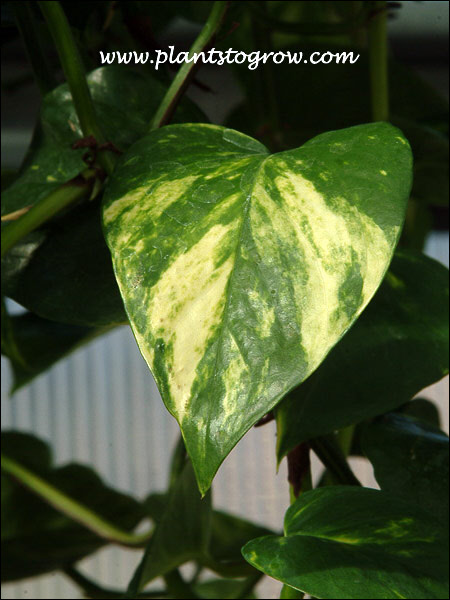| Description | Devils Ivy (Epipremnum aureum) is an easy to grow, tough plant for the moderate lit areas of the indoors. |
|---|---|
| Pronunciation | (epi-PREEM-num)(AW-ree-um) |
| Plant Type | All Plants, Indoor Foliage, Site author's observations, Tropical herbaceous Vines |
| Hardiness Zone | 10-11 |
| Sunlight | The amount of light is the key factor to the coloration of the foliage. Green foliage, lacking color usually indicates not enough light and faded foliage is too much. Move it around to find the best conditions. Prefers bright to moderate, tolerates low but never direct. |
| Moisture | Keep it evenly moist to approach dryness. Prefers average house plus humidity, but very tolerant of most any indoor humidity levels. |
| Growing Media | average house |
| Temperature | average house to average house plus |
| Flowers | spikes of tiny yellow spathes, seldom seen in cultivation |
| Leaves | simple, alternate, heart-shaped, glossy green with patches of irregular yellow variegation. |
| Stems | procumbent, creeping or climbing |
| Dimensions | In their native growing sites and in optimum growing conditions the leaves will get gigantic reaching up to 24 inches. Plants grown in the house will be much smaller reaching 3-4 inches. Usually grown as a vine reaching at least 3 feet. |
| Maintenance | With time the plant may develop bare legs and needs cutting back. This will promote new branches. |
| Propagation | tip cuttings, mallet cuttings, layering |
| Native Site | Species plant native to the Solomon Islands. |
| Misc Facts | From the Greek words epi meaning upon and premnon meaning trunk. In its natural habitat it grows on the trunks of trees. AKA: Devils Ivy, Pothos, Golden Pothos, Ceylon Creeper, Golden Hunters Robe, Australian Native Monstera, Ivy Arum, Silver Vine ,Taro Vine , Epipremnum aureum, Scindapsus aureus, Phaphidophora aureum |
| Author's Notes | The stems root easily, but are not quick to root into the growing media. This is about as tough of plant there is. Hard to kill. Easy to grow. |
| Notes & Reference | #18-House Plant Encyclopedia (Nico Vermeulen), #158-Plantepedia (Maggie Stuckey) |

Cart




